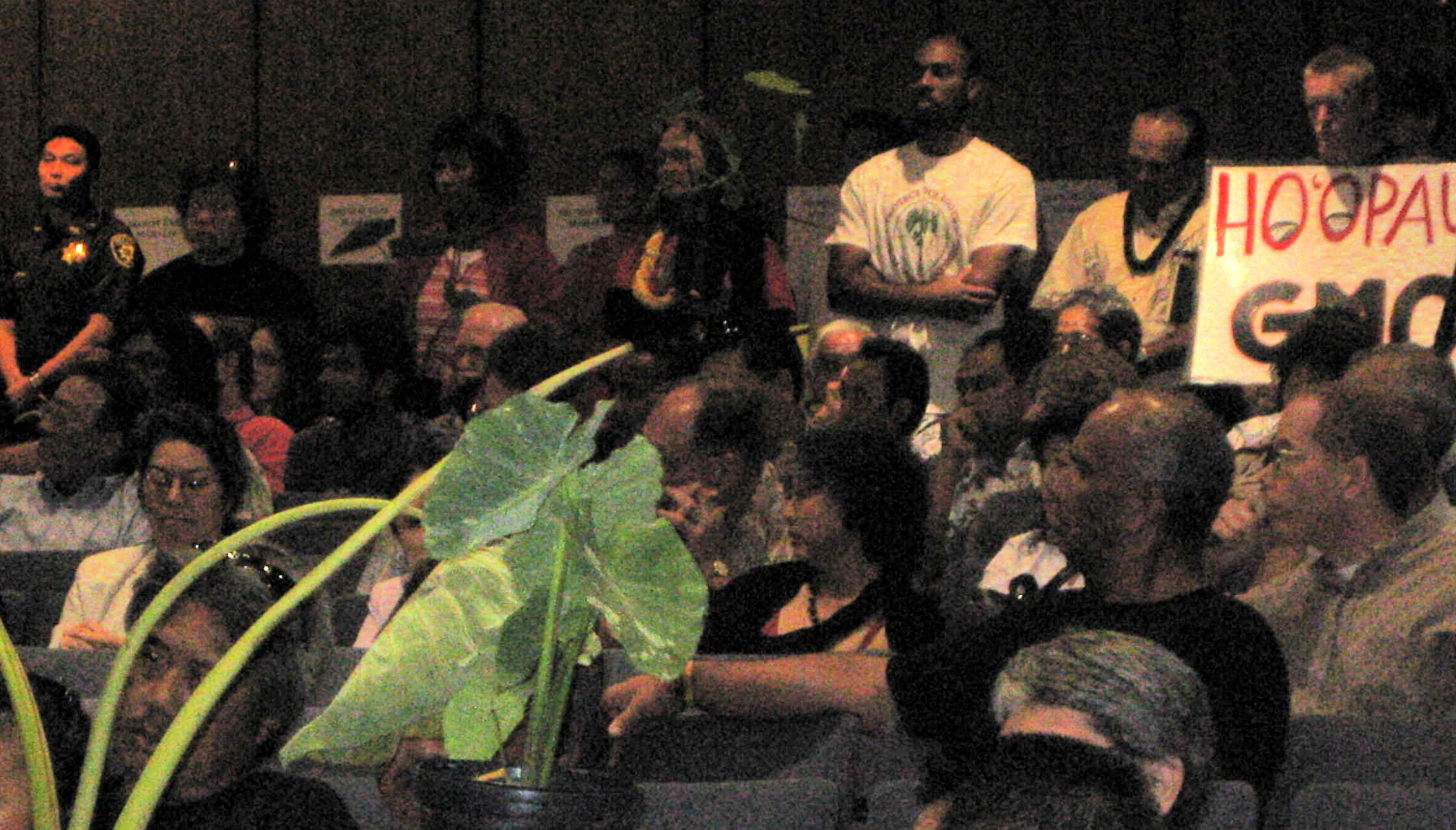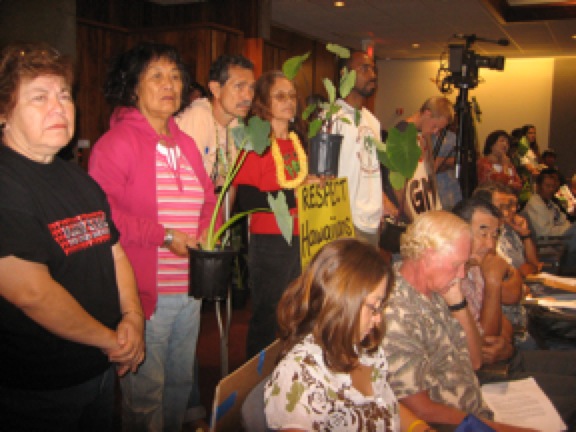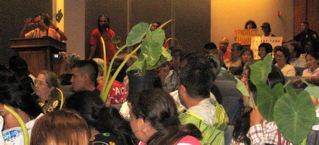Blog
News, updates, finds, stories, and tidbits from staff and community members at KAHEA. Got something to share? Email us at: kahea-alliance@hawaii.rr.com.
We should take pride in our fishponds
From Alana:
Too often loko i’a are talked about as things of the past, and somewhat obsolete. They are spoken of like memorials of a time past, a time when Hawaiians could essentially farm huge amounts of fish without even needing to feed them. But those days are over, right? No, they don’t have to be.
On Saturday at He’eia fishpond in Kaneohe, a bunch of people got together to help fish some of the predators, like baracuda, out of the fishpond. He’eia is an estimated 800 years old. It is owned by Bishop Estate, and is cared for by Paepae o He’eia, a private non-profit organization. It has taken them years to clear destructive mangrove trees off of about half the fishpond wall, and they are still working on fixing a hole in the wall, but they still manage to produce and sell moi. He’eia produces anywhere between 300 and 700 pounds of moi each year and that number is expected to increase when the wall is fixed and the fishpond is completely restored. About 100 years ago there were many more fishponds all around the island, but most of them have either been filled in completely with mangroves, or are in ruin.
He’eia, though, is a beautiful example of how community effort can lead to something meaningful and productive. Although many fishponds are privately owned now, they could still serve as productive entities of society. He’eia and Moli’i on O’ahu both manage to. Hawaiian fishponds utilized a system that was not found anywhere else on the planet. It was probably the most efficient and sustainable way of raising herbivore fish ever. Fishponds are not the remnants of an ancient culture. Hawaiians are still here, and Hawaii can still benefit from fishponds.
KAHEA Lawsuit Makes Headlines
HONOLULU ADVERTISER, ENVIRONMENTAL NEWS WIRE REPORT ON CONTROVERSY
by Stewart:
KAHEA’s complaint asking a Hawaii court to require the state Department of Land and Natural Resources to follow state law concerning permits for the Northwestern Hawaiian Islands National Marine Monument has made news, as Hawaii’s largest newspaper and a national environmental wire service both published pieces on the matter today.
The news reports come two days after KAHEA filed its suit and a day after KAHEA presented its case to the Hawaii Board of Land and Natural Resources. KAHEA has requested the board refrain from issuing new permits until the agency complies with the law; KAHEA has requested an administrative hearing on the issue.
KAHEA SUES STATE TO PROTECT NWHI
KAHEA Suit Asks Court to Enforce Law On Permits
Complaint Follows Whistleblower Suit By State Worker
“This is not the wild west; there are laws here.”
From Stewart:
The Northwestern Hawaiian Islands are known around the globe as one of the world’s last intact, fully functional marine ecosystems. They are home to highly endangered Hawaiian monk seals and the birthplace of more than ninety percent of threatened green sea turtles. Thousands of people participated in the establishment of the islands as the Papahanaumokuakea Marine National Monument, which led state and federal regulators to commit to a “do no harm” policy for all human activities allowed in the monument. The monument is intended to be one of the most protected places on earth, with access strictly limited by the do-no-harm policy and applicable state and federal laws.
Despite these protections, the state of Hawaii Department of Land and Natural Resources and the Division of Aquatic Resources have ignored their legal obligations when permitting activities in the reserve. The agencies have brushed aside KAHEA’s repeated objections to the agency’s practices. And when a lawyer working as a policy specialist to the Division of Aquatic Resources dared point out that the division was failing to follow the law the law, the division responded by firing the lawyer.
KAHEA has decided enough is enough.
“This is a place of enormous cultural significance of the Hawaiian people and is intended to be one of the world’s most protected places,” said Marti Townsend, program director and staff attorney for KAHEA. “It is unfortunate that the agencies have forced us to take legal action simply to get the agencies to follow the law, but they left us no choice.”
“This is not the wild west; there are laws here. Laws that are meant to protect our natural resources and the best interests of Hawaii’s people,” said Kumu Hula Vicky Holt-Takamine, KAHEA’s Board President. “DLNR must follow these laws.”
Action Alert: Unite to Save the Scared Summits!
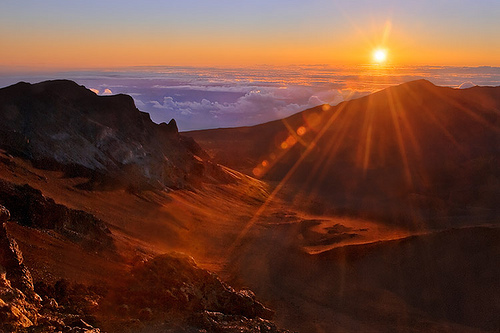 Plans for major construction in the sensitive ecosystems of our most sacred summits continue to push forward, despite significant opposition from the community. The University of Hawaii has filed two environmental impact statements — one for the world’s largest telescope in the world’s only tropical alpine desert, and another for a duplicative solar telescope in one of the most threatened national parks in the U.S. Both of these projects can be built in less sensitive areas.
Plans for major construction in the sensitive ecosystems of our most sacred summits continue to push forward, despite significant opposition from the community. The University of Hawaii has filed two environmental impact statements — one for the world’s largest telescope in the world’s only tropical alpine desert, and another for a duplicative solar telescope in one of the most threatened national parks in the U.S. Both of these projects can be built in less sensitive areas.
Though both summits are protected as conservation districts, where the law expressly discourages construction, the University refuses to compromise, insisting that these giant, intrusive structures be built where they will cause the most harm.
Don’t let good science be used to justify unnecessary ecological destruction and cultural disrespect. Take action now to defend our sacred, fragile summits.
1)
Protect Haleakala — the House of the Sun — from another, unnecessary solar telescope
2) Defend the Sacred Summit of Mauna Kea from the World’s Largest Telescope
Public hearings on the proposal to build the world’s largest telescope on Mauna Kea are being held now. All meetings are 5 to 8 p.m., with an open house in the beginning, followed by formal presentations, and then comments from the public.
Public Hearings on the New Mauna Kea Telescope Proposal
June 16 (Tuesday) Waimea – Waimea Elementary School Cafeteria
June 17 (Wednesday) Hilo – Hilo High School Cafeteria
June 18 (Thursday) Puna – Pahoa High School Cafeteria
June 22 (Monday) Ka’u – Ka’u High/Pahala Elementary School Cafeteria
June 23 (Tuesday) Hawi – Kohala Cultural Center
June 24 (Wednesday) Kona – Kealakehe Elementary School Cafeteria
June 25 (Thursday) Honolulu – Farrington High School Cafeteria
The Draft EIS is available on the Project website – www.TMT-HawaiiEIS.org – and hard copies can be found at public libraries throughout Hawaii.
Get action alerts like these sent directly to your inbox by signing up with KAHEA’s action alert network at www.kahea.org.
playing games with graves
From Evan:
Playing Games With Graves: This is what we appears to be happening at every turn here in Hawai`i. Burials are sacred and honoring our Kupuna is our responsibility. By honoring the past, we are connecting to those that have come before, acted as stewards and literally given their life to the land. Yet, the recent events at Naue Point on Kauai have brought our attention, once again, to the fact that some people just don’t get it.

On Kauai, the community members have stood tall in the face of eroding burial laws and corrupt processes for what they know is right. They need to be commended and this story needs telling. The community on Kauai is not alone although it may feel that way sometimes. The ongoing debacle at the Ward Villages construction site is yet another reminder of all that is inept about historic preservation these days.
Detours in the current legal framework allow for developers to take the easy way out with incomplete and ineffective archaeological reports that open the door to the permitting process. The difference between a “previously identified” and an “inadvertently discovered” burial can save developers loads of money, while also being the key that opens the door to development. Regardless of their trickery, it is an abomination of the spirit of the current burial law.
As one colleague recently questioned, “Previously identified by who? Everyone knows there are burials all over the beach in Hawai`i, especially on Kauai and Oahu.” Unfortunately everyone but the decision makers have gotten the message. Disarray at the State Historic Preservation Division and a City and County level permitting processes that, on Oahu has ignored an 18 year old resolution calling for detailed oversight of historical remains, continue to pave the way for gross unfairness in the handling of our most dearly departed. The process that results often resembles little more than a rubber stamp.
The situation on Kauai has brought many of these inequities to the surface and we need to take greater notice in all that is not working. After the developer was forced to preserve the burials in place by the island burial council; a scheme to build on top of the burials somehow got approved. As a result of the ongoing protests, the police stepped in to use criminal desecration statutes but the county prosecutor was unwilling to go along. OHA even took notice and asked SHPD to file a cease and desist order, which has not yet occurred. And now, Native Hawaiian Legal Corporation, along with OHA, is stepping up to take legal action. The question that remains: Why is it that we have to bring our Kupuna out of the ground and into court time and time again?
Perhaps it is the the loopholes in the burial laws that keep this mockery ongoing. Less than whole archaeological reports and a general mistrust for the entire historic preservation process are surely among the culprits as well. Making change in the current atmosphere will not be easy. One way to persevere through these challenges is to recognize that we are not isolated communities dealing with these issues, but a people connected by a common purpose. A purpose to keep sacred all that has come before and cherish all that is sacred for those yet to come. This we can do. This we must do. One step at a time, together.
See the Historic Movement to Save Haloa
A hearing was held March 19, 2008 to protect Hawai’i's ancestor and native crop – taro – from genetic modification and patenting. 6,000 people submitted written testimony in support. 8 hours of verbal testimony were given.
Now, the legislators need to pass this bill. Help them make the right decision. Click here to get involved.
Images from the hearing on SB 958:
http://maoliworld.ning.com/profile/Naalehu (click here to see more of Na’alehu’s pics)
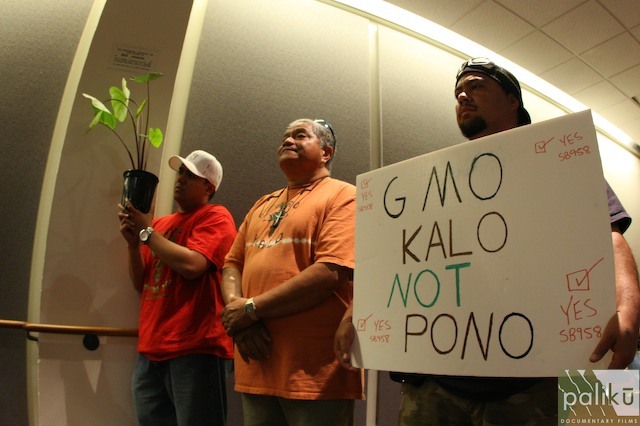
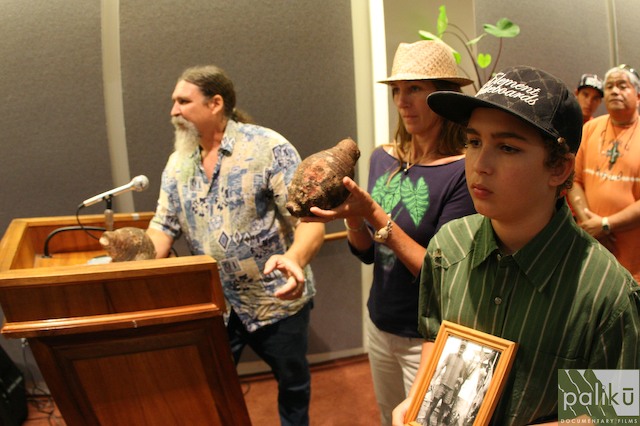
from KAHEA:
Kalo Farmers' Call to Action - Hearing for SB958
From our friends at Na Kahu O Haloa:
Aloha to all who love Taro and honor Haloa! He keiki aloha na mea kanu. Beloved children are the plants.
Mahalo to everyone who has come out to support Hawai‘i’s traditional farmers! Your strong support & efforts scored a Hearing for SB958 – 10 Year Moratorium on Genetically Modified & Patented Taro! Mahalo piha!
WEDNESDAY MARCH 19th, 8:30 am, till about 12:30
This is the last committee hearing for this bill, House Agricultural Committee. (If it passes unamended it will then go to the House floor for the 3rd reading.)
Come support kalo at this historic event, your presence is Haloa’s blessing! Please spread the word! That day is also Hawaiian Caucus Day at the Capitol, hosted by Rep. Mele Carroll, from 10am-4pm- featuring a variety of cultural activities, speakers and performances.*
In the meantime we all have the hard work of convincing the politicians to PASS the bill without inappropriate changes. Hawai‘i’s farmers, our unique ecosystem… and Haloa need your help to make this happen. So, please take a few moments to:
SEND YOUR LETTER OF TESTIMONY! write now!
Let there be no doubt that Hawaii wants to protect kalo from genetic modification! We have gotten lots of statements of support from taro farmers throughout the islands, but the decision-makers need to hear from all of us. Don’t be shy, every letter is important!
*TESTIMONY LETTERS NEEDED BY Thursday, MARCH 13th!*
Four Easy Ways to Submit Testimony:
(1) email it to: *NaKahuOHaloa@gmail.com** And if can, use your *letterhead* and attach it to the email as a PDF or doc.
A “two-fer”: When emailing your letter, you can also send it as a letter to the editor, by copying these emails into the “CC” address line when you send us your letter:
letters@honoluluadvertiser.com
letters@starbulletin.com
(2) visit www.KAHEA.org/gmo to submit testimony via our virtual testimony table.
(3) mail your testimony to KAHEA (Attn: Kalo) at
P.O. Box 270112
Honolulu, Hawaii 96827
(4) Fax it to: 1-888-528-6288 (yes, thats 888 not 808 – it’s toll free!!)
VOLUNTEERS
We need volunteers of all ages during these days leading up to the hearing! There are many ways to help Haloa. Formal volunteer internships may be available too! Please contact us if interested! NaKahuOHaloa@gmail.com.
CRUCIAL CALLS TO ELECTED OFFICIALS
Polite persistent phone calls are CRUCIAL to get support of politicians! Please call/fax/email the House Agricultural Committee and ask for support of SB958- a 10 Year Moratorium on Genetic Modification of all varieties of Taro.
Attached is a print out of Ag Committee phone numbers & talking points to pass out to everyone you know. Calls can be repeated everyday, polite persistence pays!
EDUCATIONAL MATERIALS & SPEAKERS
We have a wide variety of educational materials, including films, available to any who are interested. Expert speakers will also volunteer to visit your group to discuss this issue. Contact NaKahuOHaloa@gmail.com.
We hope these resources may be of help to you. Let us know how else we can help you and your community to speak up for Haloa!


